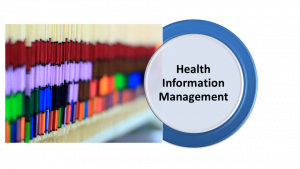A Look at the Future of Health Information Management

Healthcare IT is becoming its own niche, both because of the different software used to manage patient records and the far stricter rules surrounding information security and privacy from even similarly protected data like financial information. Let’s take a look at the future of healthcare information management. We’ll also discuss the state of healthcare IT today and factors driving these changes.
Specialized Credentials and Degree Programs
Twenty years ago, you could become a programmer through self-study, demonstration projects and applying for the many jobs that had few qualified candidates. Now you see a wide array of credentialing organizations backed by formal IT standards like those set by the ISO. It is almost impossible to get a job in IT without a degree, and advanced roles like system administrator require a bachelor’s degree and relevant industry certifications and you see specialized credentials for IT security, server support and cloud computing.
In this same vein, there are now a number of specialized credentials and degree programs specifically for healthcare IT. For example, you could earn a bachelor’s degree in health information management from the University of Cincinnati. The University of Cincinnati Online program has been accredited by CAHIM. Simply maintaining patient health records and sharing them with approved third parties requires a specialized associate’s degree in healthcare IT.
Industry Consolidation
A decade ago, there were many different healthcare IT vendors. Making matters worse was the incompatibility between data formats and forms, though there was some shared structure like the standard patient questionnaires recommended by the AMA. There has been an industry-wide consolidation in healthcare IT just as there has been on the internet focusing services and platforms with the few Big Tech firms: Facebook, Google, Apple and Amazon.
This consolidation of healthcare IT means that there are fewer systems to maintain and far greater interoperability. This trend accelerated with the introduction of cloud computing. It is aided by the shift from individual doctor’s offices to medical professionals working for healthcare systems, shifting their records into the conglomeration’s IT system.
Data Mining and Artificial Intelligence
Data mining opens up potential treatments for disorders. Data mining can sort through hundreds of studies to find side effects or factors contributing to the success of a treatment that were missed in a single study. In theory, we could use detailed analysis of many existing data sets to find answers that otherwise require risking real world clinical trials. And by combining and combing through masses of existing data, we could find multiple cases of people with unusual conditions who were helped by off label uses of drugs, speeding up the approval of existing drugs to treat those conditions. Conversely, the potential value of pooled data is creating challenges for the healthcare IT sector to allow access to data by researchers and the government without compromising patient privacy.
Healthcare IT is becoming its own discipline from basic support to system administration. Data mining and artificial intelligence are already being applied to control fraud and identify addicts, while they’re just starting to be used to find cures and better manage patients.